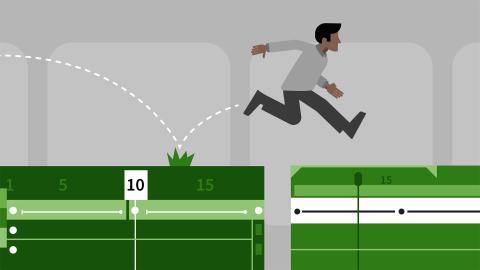(Automatic intercalation of keyframes)
It arises from traditional animation techniques previoulsy explained : An object is drawn oversized compared to the area to be displayed, and then, on each frame is moved slightly and photographed.
Or, an object can be drawn on a transparent background, placed on a painted bigger background, and moved gradually.
Or again: you can create a series of frames on a transparent background that represent a 'cyclical action of a character, which is performed "in place" (on the spot): for example, a running or walking cycle. Moving the animated unit on a static background, or moving the background, and leaving the animated unit stationary in place, will create the illusion of movement in a space.
The concept is also applicable to "stop motion" animation, that technique using cartoons made of plasticine, or featuring mechanical characters (such in Tim Burton's films, for example, or used to create robotic characters without a "human skeleton" in feature films from the 80s like Robocop and Terminator).
Here the "puppets" have a metallic skeleton, which, moved slightly each frame, allows the creation of (more or less) realistic movements.
With the advent of digital techniques, it was introduced the possibility to create keyframes for each skelethal pose, and to let the computer calculate the intermediate frames:
It will be set, for example: position 1, position 2, motion time, and we will see moving our object on the screen.
By moving different backgrounds on a transparent canvas at different speeds, a depth effect will be created (called "Parallaxe").
In 3D animation, clearly, these concepts apply to 3 dimensions.
So an object can also be moved in the dimension of the depth, creating the illusion that is moving away or closer to our frame.
Even the camera can be moved from one point to another of our scene, creating "carts", or subjective views for our hypothetical character.
As in the stop motion animation, and in the puppet theater, even the digital 3d characters can be equipped with a skeleton: a skeleton made up of points of rotation and translation, which, moved, will move the character within which are constituted.
An example of animation created with this technique: the man moves following the path: In this way the illusion of the run will be created.
Following a basic tutorial, to better understand what I'm talking about.
Basic tutorial - motion tween animation with flash
